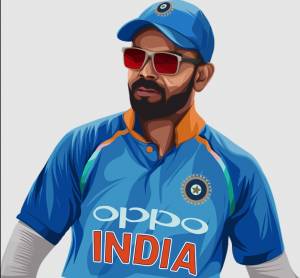
It has been a long time coming, but the T20 World Cup is finally upon us. With a change of format this time, eight teams are already battling it out for a place in the tournament proper, including 2014 winners Sri Lanka. This is the sixth instalment of the competition, and with five different countries having lifted the trophy, it shows how wide open it is. The game has changed massively since its inaugural outing in 2007, but the fierceness of the competition and the difficulty of predicting a winner has not.
There are now two groups: Group 1 consists of West Indies, Australia, South Africa and England, whereas Group 2 includes Pakistan, New Zealand, Afghanistan and India. Two further teams from the qualifying round will join each group. Every one of those sides mentioned will go into the tournament with genuine aspirations of winning it.
West Indies
The only team to have won the tournament twice, they will go in with hopes of making it a hat trick. They have a very strong batting line up, and the balance of the team is helped by an enviable number of genuine all-rounders. They also, of course, have Chris Gayle, whose personality and incredible talent not only make him one of the most talismanic sportsmen on the planet but give any team he plays for a chance at winning. They are in the toughest group and it feels like their game management needs to change so that they are less reliant on just hitting boundaries.
England
Along with India, England are joint favourites to add to their 2010 success and are, of course, the reigning ODI World Cup champions. Jason Roy, Jos Butler and Eoin Morgan all have the brute force and skill to take the game away from anyone single handedly, and you can add Liam Livingston to that list. Livingstone, who scored a 42-ball century in the Summer against Pakistan had a recent injury scare, but has been declared fit. The chink in England’s armour is their ability to play spin, and the pitches in the UAE are not going to help their cause.

India
If the pitches are a hindrance to England, then they will be the opposite for Kohli’s India. They don’t just have a team packed with very good players one through to eleven, but they also have players that know the pitches out in the UAE having played a lot of cricket over there in the past two years.
Australia
Aaron Finch’s side are not coming into the tournament in the best of form, and though their players are keen to play that down, their first task will be to make it out of the group. That said, in Steve Smith, Mitchell Starc and Ashton Agar they have players who, if they can find their form, can take the team to at least the semi-finals. The question is, will they be able to find that form?
The Best of the Rest
Tournament cricket often hinges on big time players producing their best cricket as and when it is most desperately needed. All of the top teams have players who have been there and done it, either on the international stage or domestically. Teams such as New Zealand, South Africa and Pakistan, while undoubtedly possessing world class players, may find they are relying on them too much, and the inability of the rest of the team to step up could well be their downfall.
Many people’s dark horses are Afghanistan, not perhaps to lift the trophy but to at least cause an upset and take their place in the next round at the expense of one of the so called big teams. Those of course are India, Pakistan and New Zealand. Captain Rashid Khan’s team are showing steady improvement, and they will be going in with a nothing-to-lose mentality that may prove dangerous against teams weighed down by expectations and the pressure that comes with it. They also have several players who, like India, have played regularly in the UAE so will know the conditions and the pitches, and what is needed to both take wickets and score runs on them.

